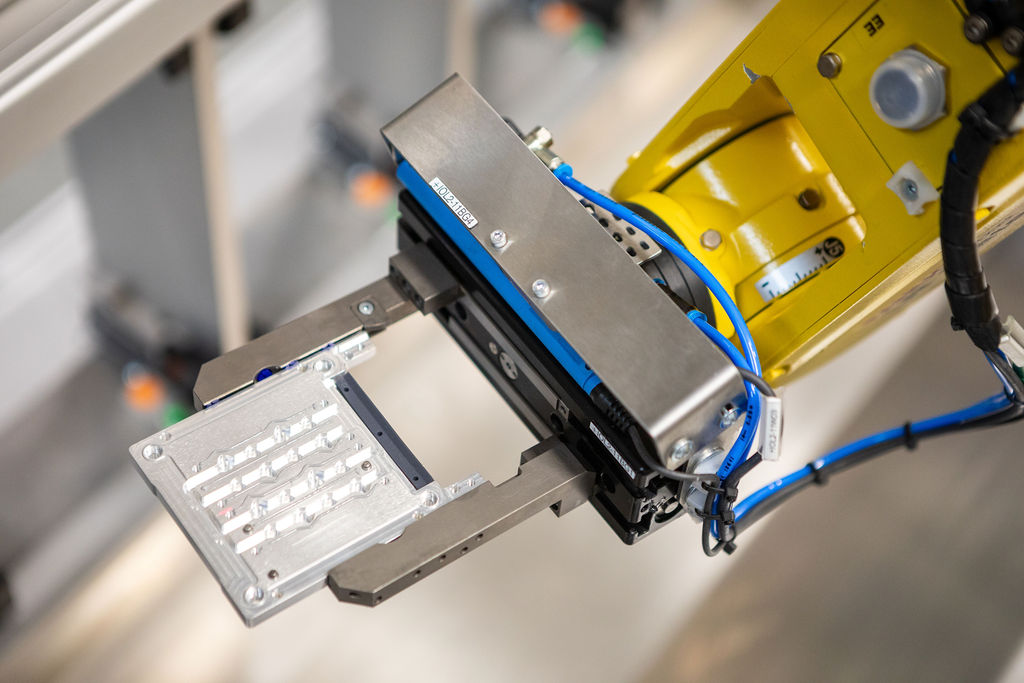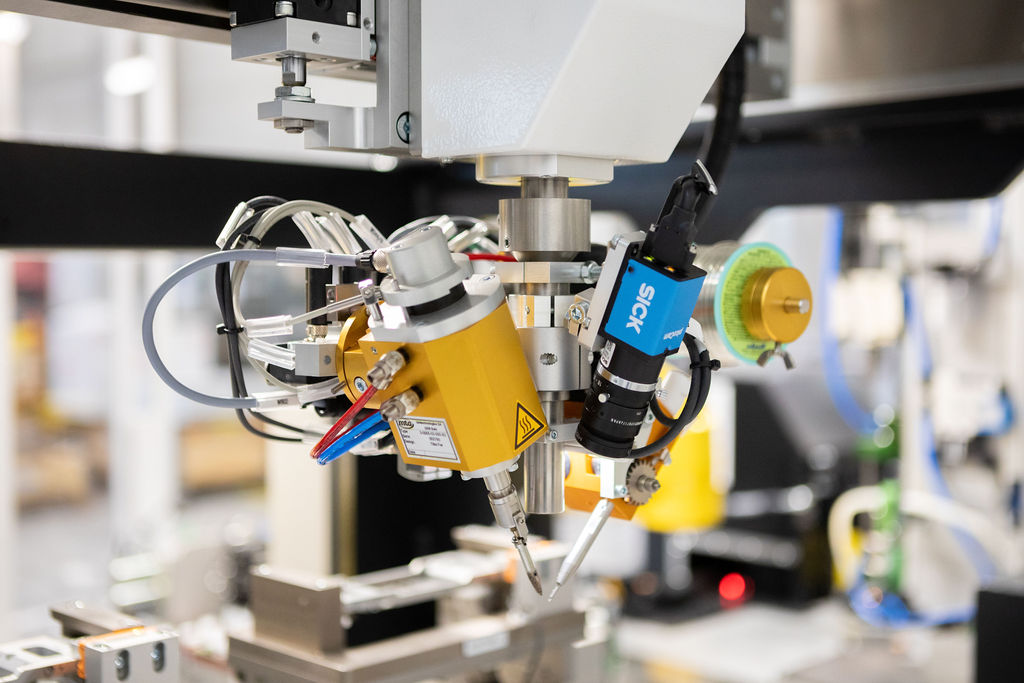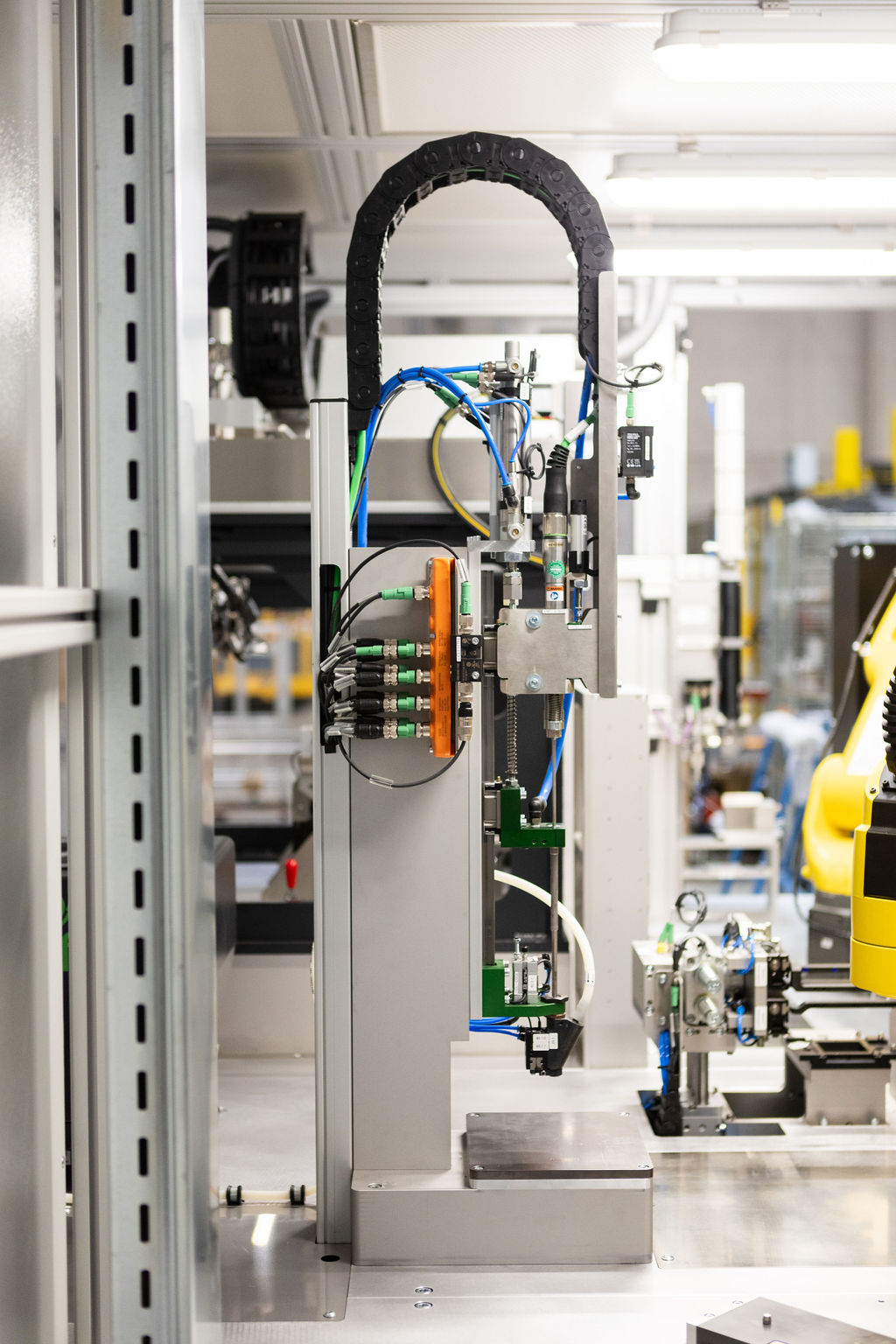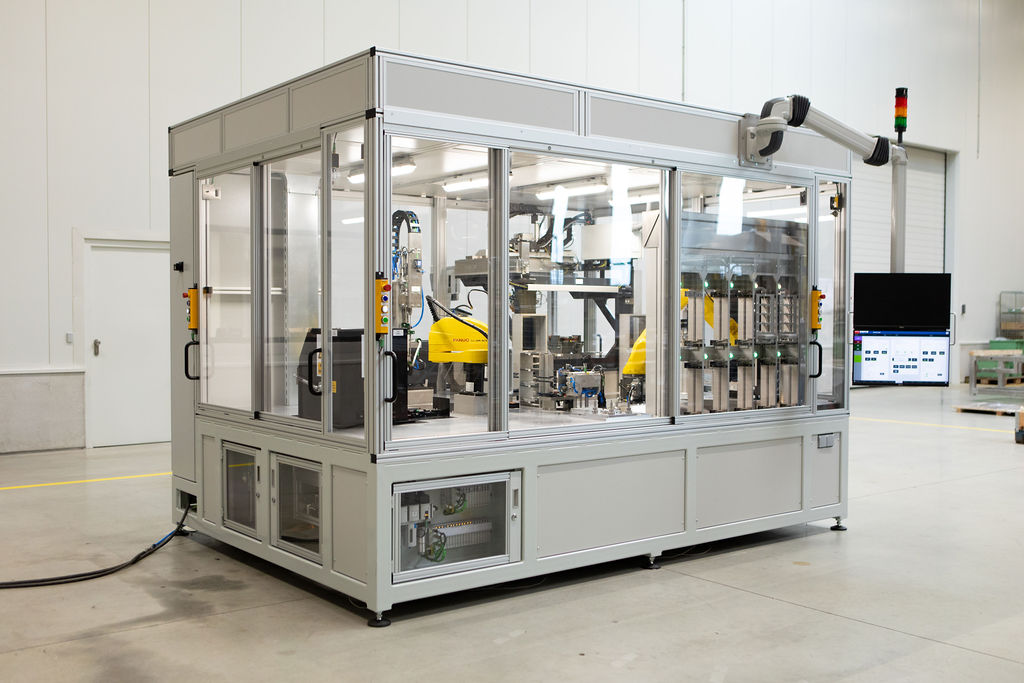Electronic assembly machine: flexible automation with extreme precision
Challenge
For a world market leader in electronics development, we worked out the automation for a complete assembly of PCBs with light emitting components. The challenge for this assembly machine was the large product variation in combination with a very accurate positioning.
Additional requirements for the assembly machine were
- lower cycle time,
- fewer operator actions,
- and a thorough internal quality control.
The new machine had to be able to fully automate the following assembly process:
- Soldering on a PCB.
- Dispensing a TIM onto a backplate.
- Screwing both components together.
- Transferring the assembly to testing, and finally laser marking.
The first big challenge was the high variability. Two product families, with within each family different variants. That means different
- light emitting components,
- PCBs,
- backplates,
- and points to solder.
The second big challenge: product tolerances. The positional accuracy for soldering, for example, is extremely important. On top op that, the different products vary a lot.
Solution
We started by identifying all the variables. Then we designed and made a fixture for every product . Those precision milled custom parts, we make in-house. That was also one of the reasons why this company chose us: by milling those precision parts ourselves, we keep a grip on quality.
The fixture guarantees that the positioning of the various parts is correct down to the sub-millimeter. So there is a double mechanical guarantee:
- the product on the fixture,
- and the fixture on the machine.
The extreme precision with which the two robotic arms work does the rest. Those two arms act as the playmakers of the assembly machine. They guide the assembly from station to station.
We also built RFID tags into the fixtures. RFID stands for Radio-frequency identification, a technology that uses radio waves to remotely store and read out information. This allows the assembly machine to
- identify the fixture,
- knows which components are being offered,
- and loads the correct assembly sequence programmed by us.
The identification is done wirelessly and automatically. A first time when the robotic arm comes to pick up the parts and the tag passes an RFID laser.
The first stop is the soldering station. There, a pen solder the printed circuit board. While the solder unit does its work, the robotic arm brings the backplate to the dispensing station. That applies a thermal interface material to the plate.
Time for an intermediate check. Both subassemblies head toward a camera system that checks that if the TIM has been applied evenly. And whether the soldering meets the quality requirements.
Then the robotic arm brings both components to the flipping station. The arm deposits them in another fixture and they are flipped over for the screwing station. Based on that fixture’s RFID tag, this station knows exactly where the assembly points are.
The final stop is the testing station. Here, the assembly also receives a laser tag: atheserial number and company logo.
Testing and validation
We integrated several testings and validations into this assembly machine. For example, the assembly is presented to a testing station during the last step. But we also built in various checks in the line itself: a vision system, the circuits that are tested one more time, the soldering process that the operator can follow live….
RFID also tracks step by step where the component is located the assembly process. Now it has been offered to that station. Now it has been soldered. The initial testing is successful. Then, if a particular assembly does get rejected, the operator knows where in the process the error is. And what exactly went wrong.
Soldering
With this technology, the solder wire is close to the head. So it unrolls almost by itself. In their previous machine, the coil was further from the soldering pin, which led to blockages.
Results
An assembly machine that automates what is actually almost impossible to automate: a product with an enormous number of variables, combined with precision down to the sub-millimeter level.
By working with fixruezq and RFID, the company can also introduce new products or variants on this line. Then we just need to design and make a new fixture and program a new assembly sequence.
This installation is a big step forward that allows them to both secure their knowledge and integrate their learnings from their previous machine.
- Two product families instead of one, so more flexibility.
- Less manual handling, so fewer quality problems.
- Better soldering technology, so higher quality and less downtime.




